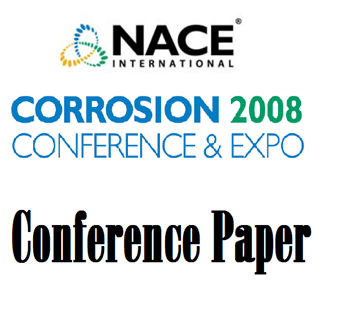Stress Corrosion Cracking of 18-inch Diameter Gas Pipeline ( X52) M. Ajmal* A.R. Saleemi** and Bilal saleem* *Department of Metallurgical and Materials engineerin University of Engineering and Technology Lahore Pakistan. **Department of Chemical Engineering University of Engineering and Technology Lahore Pakistan. This paper presents the failure analysis of an 18-inch diameter spiral-welded SMAW construction pipeline (X-52) coated with glass fiber reinforced coal-tar enamel. The pipeline failure produced a large crater (almost 22 feet deep 15 feet wide and 50 feet long).The failure occurred over 35 feet long section out of which 19 feet long pipeline segment opened near its spiral weld to form a plate. A six feet long portion of pipeline was detached from the ruptured end and was blasted away to a distance of around 300 meter under the gas pressure. The coating was missing on bottom from 4’O clock to 7’O clock position of pipeline adjacent to the fractured portion at many places. Uniform galvanic corrosion and pitting was also observed on several parts of the exposed portions of the ruptured pipes. The rupture appears to have developed due to the decay/disbondment of the protective fiber reinforced coal tar coating. The metallography revealed inter-granular nature of fracture. Additional stress at the rupture area of the pipe line due to lowering/submerging of the pipe line appears to have contributed to this rupture. Detailed investigation suggested that the rupture of gas pipeline X-52 was due to the stress corrosion cracking. This paper presents the failure analysis of an 18-inch diameter spiral-welded SMAW construction pipeline (X-52) coated with glass fiber reinforced coal-tar enamel. The pipeline failure produced a large crater (almost 22 feet deep 15 feet wide and 50 feet long).The failure occurred over 35 feet long section out of which 19 feet long pipeline segment opened near its spiral weld to form a plate. A six feet long portion of pipeline was detached from the ruptured end and was blasted away to a distance of around 300 meter under the gas pressure. The coating was missing on bottom from 4’O clock to 7’O clock position of pipeline adjacent to the fractured portion at many places. Uniform galvanic corrosion and pitting was also observed on several parts of the exposed portions of the ruptured pipes. The rupture appears to have developed due to the decay/disbondment of the protective fiber reinforced coal tar coating. The metallography revealed inter-granular nature of fracture. Additional stress at the rupture area of the pipe line due to lowering/submerging of the pipe line appears to have contributed to this rupture. Detailed investigation suggested that the rupture of gas pipeline X-52 was due to the stress corrosion cracking.




